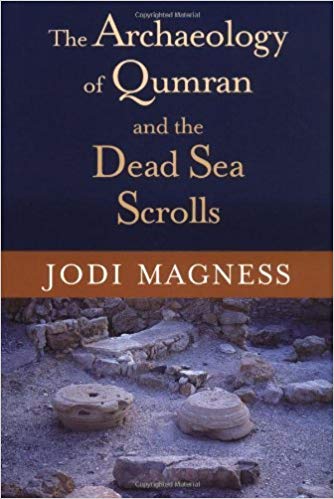File:2002 * Magness.jpg
2002_*_Magness.jpg (334 × 499 pixels, file size: 30 KB, MIME type: image/jpeg)
Jodi Magness, The Archaeology of Qumran and the Dead Sea Scrolls (Grand Rapids, MI: Eerdmans, 2002).
Abstract
"The Dead Sea Scrolls are among the most interesting and important archaeological discoveries ever made, and the excavation of the Qumran community itself has provided invaluable information about Judaism and the Jewish world in the last centuries B.C.E. Like the Dead Sea Scrolls, however, the Qumran site continues to be the object of intense scholarly debate. In a book meant to introduce general readers to this fascinating area of study, veteran archaeologist Jodi Magness here provides an overview of the archaeology of Qumran and presents an exciting new interpretation of this ancient community based on information found in the Dead Sea Scrolls and other contemporary documents. Magness's work offers a number of fresh conclusions concerning life at Qumran. She agrees that Qumran was a sectarian settlement but rejects other unconventional views, including the view that Qumran was a villa rustica or manor house. By carefully analyzing the published information on Qumran, she refines the site's chronology, reinterprets the purpose of some of its rooms, and reexamines the archaeological evidence for the presence of women and children in the settlement. Numerous photos and diagrams give readers a firsthand look at the site. Written with an expert's insight yet with a journalist's spunk, this engaging book is sure to reinvigorate discussion of this monumental archaeological find."--Publisher description.
Contents -- An Introduction to the Archaeology of Qumran -- The Discovery of the Dead Sea Scrolls and the Exploration of Qumran -- The Dead Sea Scrolls and the Community at Qumran -- The Buildings and Occupation Phases of Qumran -- What Do Pottery and Architecture Tell Us about Qumran? -- Communal Meals, a Toilet, and Sacred Space at Qumran -- Miqva'ot at Qumran -- Women and the Cemetery at Qumran -- The Temple Tax, Clothing, and the Anti-Hellenizing Attitude of the Sectarians -- The Settlements at Ein Feshkha and Ein el-Ghuweir
Second Edition (2021)
"The Dead Sea Scrolls have been described as the most important archaeological discovery of the twentieth century. Deposited in caves surrounding Qumran by members of a Jewish sect who lived at the site in the first century BCE and first century CE, they provide invaluable information about Judaism in the last centuries BCE. Like the Dead Sea Scrolls, the Qumran site continues to be the object of intense scholarly debate. In a book meant to introduce general readers to this fascinating area of study, veteran archaeologist Jodi Magness provides an overview of the archaeology of Qumran that incorporates information from the Dead Sea Scrolls and other contemporary sources. Magness identifies Qumran as a sectarian settlement, rejecting other interpretations including claims that Qumran was a villa rustica or manor house. By carefully analyzing the published information on Qumran, she refines the site’s chronology, reinterprets the purpose of some of its rooms, and reexamines archaeological evidence for the presence of women and children in the settlement. Numerous photos and diagrams give readers a firsthand look at the site. Considered a standard text in the field for nearly two decades, The Archaeology of Qumran and the Dead Sea Scrolls is revised and updated throughout in its second edition in light of the publication of all the Dead Sea Scrolls and additional data from Roland de Vaux’s excavations, as well as Yitzhak Magen and Yuval Peleg’s more recent excavations. Specialists and nonspecialists alike will find here an overview of the Qumran site and the Dead Sea Scrolls that is both authoritative and accessible."--Publisher description.
Contents -- An introduction to the archaeology of Qumran -- The discovery of the Dead Sea scrolls and the exploration of Qumran -- The Dead Sea scrolls and the community at Qumran -- The buildings and occupation phases of Qumran -- What do pottery and architecture tell us about Qumran? -- Communal meals, a toilet, and sacred space at Qumran -- Miqva’ot at Qumran -- Women and the cemetery at Qumran -- The Temple tax, clothing, and the anti-Hellenizing attitude of the sectarians -- The settlements at Ein Feshkha and Ein el-Ghuweir.
External links
- [ Google Books]
File history
Click on a date/time to view the file as it appeared at that time.
| Date/Time | Thumbnail | Dimensions | User | Comment | |
|---|---|---|---|---|---|
| current | 15:32, 22 July 2018 |  | 334 × 499 (30 KB) | Gabriele Boccaccini (talk | contribs) |
You cannot overwrite this file.
File usage
The following page uses this file:

